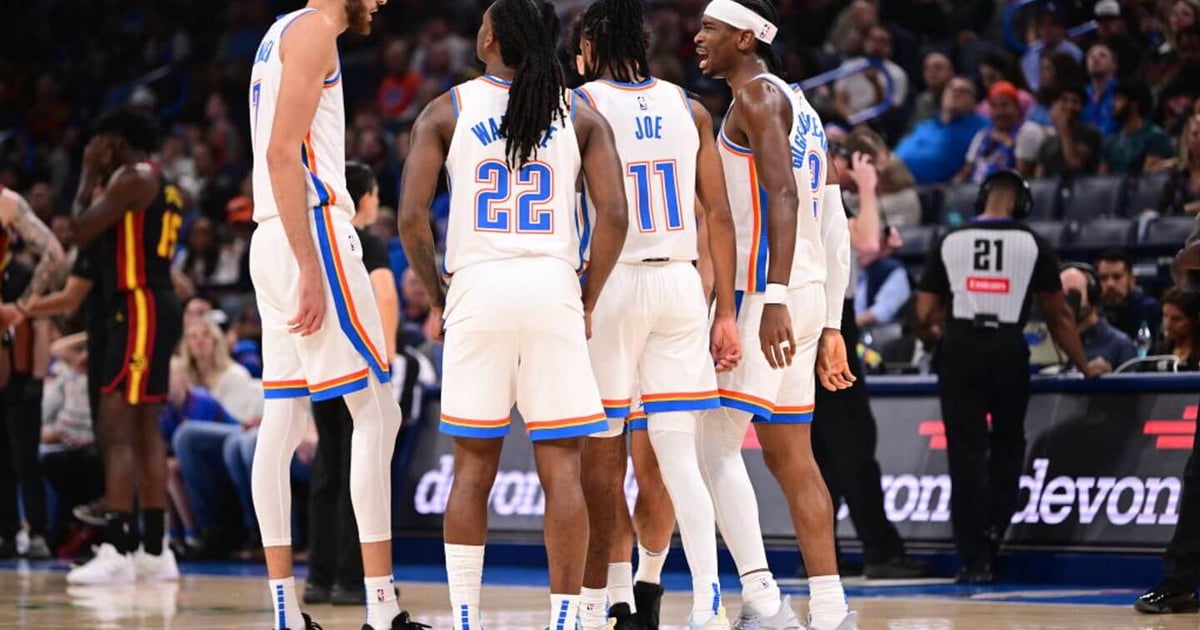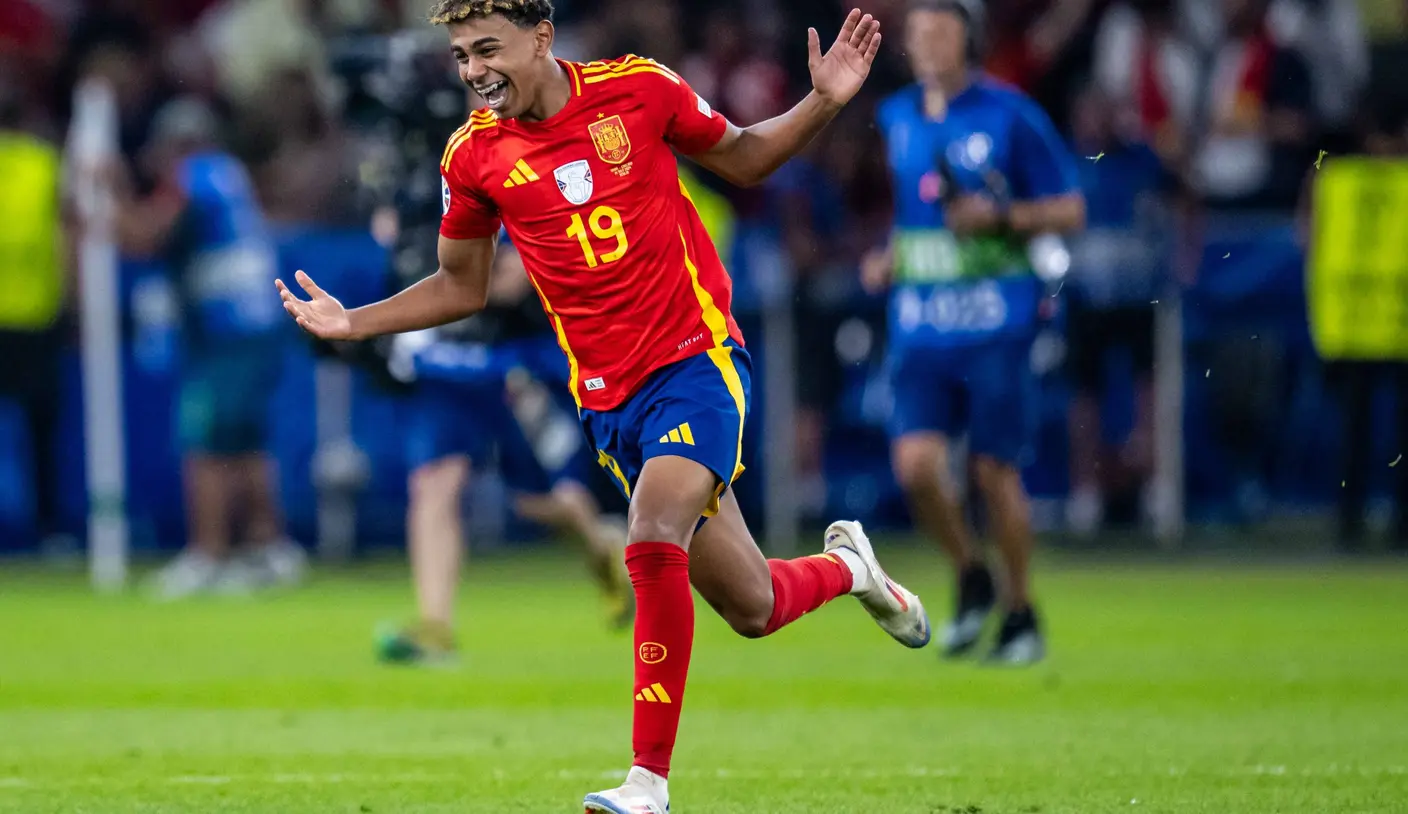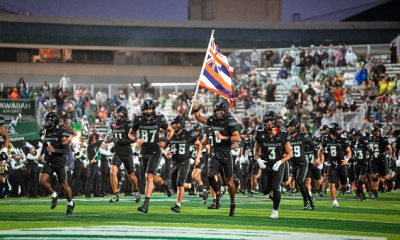Group H: Spain, Cape Verde, Saudi Arabia and Uruguay | 2026 FIFA World Cup Draw
Group H is set for the 2026 FIFA World Cup, featuring Spain, Cape Verde, Saudi Arabia and Uruguay.

On this date, in 2016, the Cleveland Cavaliers defeated the 73-win Golden State Warriors in a classic Game 7 to secure their NBA championship and became the first team to overcome a 3-1 deficit in the finals.
By doing so, the Cavaliers also became Cleveland’s first major professional sports team to win a title since the 1964 Browns. The Cavaliers-Warriors 2016 finals series marked the first time in NBA history both teams entered Game 7 with the same exact number of points (610). The deciding matchup itself included 20 lead changes and 11 ties as Cleveland won 93-89.
LeBron James, who crafted a 27-point, 11-rebound, 11-assist triple-double, secured his third career NBA Finals MVP after becoming the first player ever to lead all players in a playoff series in points, rebounds, assists, steals and blocks. Kyrie Irving chipped in 26 points and six rebounds, including a crucial go-ahead bucket over Stephen Curry with 53 seconds remaining. Although Kevin Love finished with only nine points on nine shots, his lockdown defense on the 2016 unanimous MVP also helped make the Cavaliers champions and wrapped one of the best playoff series of all time.
But like any series worth remembering, highlights are required. Enter James’ season-saving and legacy-altering block on Andre Iguodala with the game tied at 89. One needs to only read Mike Breen’s call of the moment to instantly relive it:
“Iguodala to Curry, back to Iguodala, up for the layup! Oh! Blocked by James! LeBron James with the rejection!”
By game’s end, James, who was born in Akron, Ohio, developed into a high school phenom at St. Vincent-St. Mary’s and spent the first seven seasons of his NBA career with the Cavaliers before winning two titles in four seasons with the Miami Heat, couldn’t contain his excitement for delivering an NBA title to his home state.
“I set out a goal two years ago, but I came back to bring a championship to this city.” James explained after Game 7. “I gave everything that I had. I put my heart and my blood and my sweat and my tears to this game. Against all odds, kept that same positive attitude. Instead of saying, ‘Why me?’ I just said, ‘This is what they want me to do.’
Cleveland! This is for you!”
Updated Jan. 2, 2026, 7:24 p.m. ET
It’s time to dust off the annual ’49 football trophy’ that will once again be hoisted in the air on Thanksgiving Day.
The long-standing, 90-year high school holiday rivalry between Joseph Case and Somerset Berkley is officially back on this coming November. The last time the two schools met was in 2022 when the Raiders defeated the Cardinals, 50-14.

Returning this month, the Soldier Hollow Kickers and Gliders program aims to introduce more youth across the Wasatch Back to cross-country skiing, with renewed efforts focused on reaching families in the local Latino population.
The beginner-focused program is designed for children ages 6 to 11 runs from Jan. 6 through Feb. 26, with sessions held Tuesdays and Thursdays from 4 to 5:30 p.m. at Soldier Hollow’s Sports Discovery Center, located at 2002 South Olympic Drive in Midway.
“Kids will learn the basics of skiing through purposeful play, games and drills. All participants get free hot chocolate to warm back up after each practice,” said Gerrit Garberich, senior sports manager and head comp BIA Coach.
Last winter, Garberich and Luke Bodensteiner, Soldier Hollow’s general manager and chief of sport development for the Utah Olympic Legacy Foundation, began a discounted registration initiative aimed at increasing participation among Latino families.
That initiative set aside 20 spots for Latino participants at a discounted rate of $25 supported by the Wasatch Community Foundation and the Wasatch Latino Coalition. Additionally the program offers needs-based scholarships to all families.
Program leaders have pointed to longstanding underrepresentation of Latino families in local skiing programs as a key reason for expanding outreach and reducing barriers.
“Last year we had 95 kids participate in our program but only four took advantage of the $25 registration for the Latino community,” said Garberich.
Organizers recognized that challenges such as transportation and communication have limited participation in the past and said they are working to improve outreach and access for Latino families this season.
Transportation was not offered last year due to a lack of available bus drivers — a limitation organizers said may have affected participation. This winter, the program has secured two bus drivers in hopes of increasing access and enrollment.
Free transportation will be available for registered participants, with a program bus picking up children at 3:40 p.m. from the southeast portion of the Wasatch Recreation Center parking lot and returning them to the same location at approximately 5:45 p.m.
The goal is to reduce common barriers, organizers said — which include cost, equipment and transportation — that can prevent families from accessing winter sports.
The program provides all ski equipment, including skis, boots and poles. Families are asked to send children dressed for winter conditions, including windproof or snow pants, base layers, a warm jacket, hat, gloves, neck gaiter, warm socks and a water bottle.
Registration is now open, with separate links available in English and Spanish. Families seeking Spanish-language registration and access to the reduced $25 rate for Latino participants are encouraged to use the Spanish registration link, while general registration is available through the English link.


Barre3
Embrace strength, cardio and mindfulness all at once with a session at this Bethesda studio. As anyone who’s done barre can attest, those subtle movements inspired by ballet training look deceptively easy but deliver major results. The workouts take you through low-impact isometric moves, bursts of cardio, and breath work that’s meant to center your mind. Everyone, from beginner to expert, is welcome at Barre3, which is known locally for its popular classes, with about a dozen offered per day.
4829 Cordell Ave., Bethesda, 240-858-6101, barre3.com
Chevy Chase Athletic Club
This 20,000-square-foot club sprawls across the 18th floor of the Barlow Building in Friendship Heights, offering penthouse views of downtown D.C. as you lift, spin or power walk. Its squash program is the biggest in the area, including private and group classes, clinics, tournaments and more. Various personal training options zero in on youth sports, seniors’ balance and flexibility, and all-around fitness.
5454 Wisconsin Ave., Chevy Chase, 301-656-8834, myccac.com
City and County Recreation Centers
Want to work out on the cheap or even for free? Montgomery County has 22 recreation centers with workshops, clinics, drop-in programs, sports, open gym and special events. A fitness center pass is free with proof of county residency and gets you access to gym equipment, open gym and more. Some classes, ranging from golf to pickleball, are available for a fee, and a pass to the county’s four indoor pools and seven outdoor pools costs $400 per year for county residents. There are also city rec centers for a small fee in Gaithersburg and in Rockville, where the Rockville Swim & Fitness Center offers day passes and membership packages for residents and nonresidents.
Montgomery County: montgomerycountymd.gov/rec/facilities/recreationcenters; Gaithersburg: gaithersburgmd.gov/recreation; Rockville: rockvillemd.gov/398/swim-fitness-center
CrossFit Bethesda
If the idea of walking into a huge gym—where you don’t really know how to work the machines or, well, do much of anything—fills you with dread, consider a more personalized workout routine at CrossFit Bethesda. Coaches and classmates quickly get to know your name as you all run through barbell squats and kettlebell swings together. Variety is the name of the game here, so if boredom with the same old, same old is what’s killing your desire to work out, CrossFit might be a good fit—the high-intensity fitness approach combines elements of weightlifting, cardio and even gymnastics.
4848 Cordell Ave., Bethesda, 301-381-5855, crossfitbethesda.com
Equinox Bethesda
One of 111 Equinox clubs around the globe, this is a posh place for getting fit, equipped with such luxuries as a saltwater pool and a spa for facials and massages. Group classes, which are unlimited for members, include cycling, barre, Pilates and high-intensity interval training (HIIT). Equinox also prides itself on a top-notch personal training program.
4905 Elm St., Bethesda, 301-652-1078, equinox.com
extendYoga
You can do your sun salutations and asanas at this studio, or from the comfort of your home in virtual classes, as teachers lead you through sessions with an emphasis on the vinyasa flow style. Choose from about six classes per day. As part of its mission to make yoga welcoming to all, Extend offers Repped, an “inclusive yoga series” aimed at underserved groups; past months have been devoted to Muslim and Asian American Pacific Islander communities.
12106 Wilkins Ave., North Bethesda, 301-881-3330, extendyoga.com

Hotworx Bethesda
Eight small saunas that can accommodate up to three people each make up this boutique fitness studio, part of a national chain. Classes—taught by instructors via TV screens in the saunas—combine heat, infrared energy and exercise with the goal of maximizing the calories burned in shorter bursts of time. Choose from sessions such as 30-minute hot yoga or hot Pilates, or 15-minute HIIT workouts such as cycling. The studio is open 24/7 to accommodate busy schedules.
4830 Rugby Ave., Bethesda, 301-966-3924, hotworx.net
Life Time
Billed as “Potomac’s first athletic country club,” that Life Time location is all about breaking a sweat in style. Locker rooms decked out in wood and marble, and accented with flowers, feel reminiscent of a high-end hotel bathroom (they also have steam rooms, saunas and a whirlpool). Tend to your whole body, head to toe, at the spa, and recharge at the cafe with a seasonally changing menu. The Gaithersburg location (billed as “Gaithersburg’s only athletic country club”) offers swanky spa services, too, and also boasts two indoor and two outdoor pools. At both Life Time spots, children ages 3 months through 11 years can hang in the Kids Academy while you get your workout in.
1151 Seven Locks Road, Potomac, 240-314-7022; 10121 Washingtonian Blvd., Gaithersburg, 301-569-5100; my.lifetime.life

Onelife Fitness
The basketball courts are a major draw at some of the Onelife gyms; you can play pickup, just shoot around, or join one of the camps, classes, leagues or organized games. (Note: The Pike & Rose, Germantown and Olney locations don’t have courts.) Cutting-edge equipment, a wide range of group fitness classes, and amenities such as pools, whirlpools and saunas at several locations are good reasons to work out here. Overdid it just a bit? Many locations offer red light therapy (which reduces pain and inflammation), HydroMassage (for loosening tight muscles and alleviating pain) or compression therapy (to decrease muscle soreness and inflammation) on-site.
4400 Montgomery Ave., Bethesda, 301-656-9570; 20500 Seneca Meadows Parkway, Germantown, 240-686-4500; 17821 Georgia Ave., Olney, 301-358-6698; 11594 Old Georgetown Road (Pike & Rose), Rockville, 301-245-3908; 1407 Research Blvd., Rockville, 240-599-8383; onelifefitness.com
Orangetheory Fitness
Newbies and seasoned athletes alike are welcome here—Orangetheory workouts are for all fitness levels. This popular chain takes you through instructor-led classes that differ from traditional HIIT classes because of their adaptability—you can raise or lower your intensity based on your fitness level and goals for the day. That’s aided by a system that tracks your body in real time, showing you your heart rate at all times and helping you adjust accordingly. The cardio part of the workout includes treadmills, rowers and other equipment.
7955 Woodmont Ave., Bethesda, 301-565-0366; 622 Center Point Way, Gaithersburg, 301-250-1060; 18205 Hillcrest Ave., Olney, 443-221-6700; 1601 Rockville Pike, Suite 210A (Congressional Plaza), Rockville, 240-380-3311; 12435 Park Potomac Ave., Suite R-10, Potomac, 301-265-5050; 8455 Fenton St., Silver Spring, 301-798-7433; orangetheory.com

Pink Moon
Moms are the raison d’être for this wellness center that opened in Bethesda in May 2025. Pilates and total-body toning classes are the main draws, as are yoga sessions—some of which even incorporate your little ones, from babies through preschoolers. Child care is also offered for kids ages 6 months to 6 years from 9:15 a.m. to 2:15 p.m. on weekdays. If you’re new to working out or easing back into it postpartum, don’t worry—they’re all about inclusivity here.
7610 Old Georgetown Road, Plaza Level, Bethesda, 240-222-1146, pinkmoonmoms.com
Soldierfit
Atten-hut! Boot camp classes are the centerpiece here; the Rockville location reserves half of its 10,000 square feet for those sessions, aimed to strengthen you both physically and mentally. The 50-minute workouts are structured military-style, but the idea is to build camaraderie, too—Soldierfit encourages you to think of its trainers as your “friendly drill sergeants.” There’s also cardio and other workout equipment if you prefer to go it alone.
12241 Nebel St., Rockville, 240-669-8298; 1 E. Diamond Ave., Gaithersburg, 301-407-1800; 12210 Plum Orchard Drive, Suite 206, Silver Spring, 301-751-3163; soldierfit.com
SoulCycle
Cyclists, you may just find your tribe at the Bethesda outpost of this popular chain of spin studios. High-energy music—maybe Taylor Swift, ’90s throwbacks or hip-hop, depending on the class—pumps from the speakers as instructors lead you through the choreography. Hooked? You can buy your own SoulCycle bike for at-home workouts and pedal along with classes you stream live.
4931 Elm St., Bethesda, 301-803-7685, soul-cycle.com
The St. James Performance Club
Grapevine your way to better health in the step aerobics class, challenge yourself to a boot camp-style routine in the pool, or sculpt your body on the gym equipment at this offshoot of The St. James’ mega sports complex in Virginia. Whatever your workout, refuel afterward with a tropical acai bowl or a pineapple-mango smoothie at Vim & Victor, a chef-curated wellness bar.
6828 Wisconsin Ave., Bethesda, 240-507-5366, thestjames.com
Urban Boxing Bethesda
Some days you just want to slam a fist into something. Do that here and get a full-body workout at the same time. The plethora of classes offered in this gritty but well-equipped studio include boxing of course—but also kickboxing, Muay Thai, Brazilian jiujitsu, mixed martial arts, sparring and yoga. All experience levels are welcome, and some boxing classes are for kids only.
4834 Cordell Ave., Bethesda, 301-656-2186, urbanboxingbethesda.com
YMCA
Dink and lob at the Y, which has a happening pickleball program—you can play, take classes or sign up for clinics. Spice up your fitness routine with a new class, from belly dancing to Zumba. Or dive into the indoor or outdoor pool (swimming classes are offered for kids, teens and adults). Bonus: Cooking classes with an emphasis on nutrition are offered for kids, adults, seniors and families. Nutrition counseling is also available for members.
YMCA Bethesda-Chevy Chase, 9401 Old Georgetown Road, Bethesda, 301-530-3725; YMCA Silver Spring, 9800 Hastings Drive, Silver Spring, 301-585-2120; ymcadc.org
This appeared in the 2025-2026 Insider’s Guide.

A parent said to me recently, “We don’t have time for anything anymore. Every season is another sport, another camp, another commitment.” That comment stuck with me, because it echoes what many parents have shared with me over the years. One parent told me how, in their experience with youth sports, certain activities began taking priority over everything else not because kids loved them more, but because families had already invested so much money that stepping back didn’t feel like an option.
Hockey and dance were early examples. Those weren’t just sports; they were major financial commitments that shaped the entire family’s schedule and budget. Another family we know has a son who eventually signed with the LA Kings. When he received his signing bonus, he bought his dad a new truck. He told him, “You wore your truck out taking me to practices and games all those years.” It was a heartfelt gesture, but it also shows the level of sacrifice families feel obligated to make long before they know whether any of it will pay off.
Even the outdoors, the place many of us turned to for simplicity, isn’t immune from this shift. Several people have told me how fishing, once the most accessible pastime around, has become another high‑cost, high‑pressure pursuit. Multiple locators with forward‑facing sonar, spot‑lock trolling motors, specialized tackle, and the vehicle to tow the boat have turned a “fishing boat” into a serious investment. What used to be a quiet day on the water has become yet another arena where gear and competition creep in. Parents also tell me they feel pressure to keep spending, keep traveling, and keep their kids committed year‑round, sometimes chasing the child’s dream, sometimes chasing their own. That’s not new, and it’s not going away. But it does feed into a culture where families feel they have to keep up, spend more, and sacrifice more.
Meanwhile, the simple things, the things that used to define childhood, are getting squeezed out. Those last crisp days of pheasant season. Walking a woods line for squirrels or rabbits. Wandering a field with a dog and no real agenda. Summer mornings on the lake. These moments have been replaced by “mandatory” camps, weekend tournaments, and off‑season practices that leave no room for anything else. One parent told me, “My own grandsons have so much going on that it’s almost impossible for them to find time to fish with Grampa.” Not because they don’t want to but because their schedules don’t leave room for unstructured time, family traditions, or simply being outdoors for the fun of it.
If we want kids to stay active in sports and still grow up with the outdoor traditions so many of us value, we need to bring back some balance. Let them rest. Let them wander. Let them fish with their grandparents. Let them be kids again.
Gary Korsgaden lives in Pelican Rapids, Minn.

From 2008 to 2012, Spain absolutely dominated the international soccer scene— winning two European championships (2008, 2012) and a World Cup title (2010). In 2024, the Spanish took home another Euros title, and are currently the top-ranked team in the official FIFA rankings.
Despite losing to Portugal in the UEFA Nations League final, the team is filled with a perfect blend of youth and experience with talent at every position. All eyes will be Lamine Yamal, the 18-year old sensation that took the world by storm last year with his dominant play at the Euros.
How they Qualified:
Spain qualified for the 2026 FIFA World Cup by finishing atop Group E in UEFA qualifying, securing one of Europe’s automatic spots for the expanded 48-team field. They put together a consistent, high-scoring campaign and remained in control of the group throughout, ultimately clinching first place ahead of Turkey and the other contenders.
World Cup Group Stage Schedule:
Group H is set for the 2026 FIFA World Cup, featuring Spain, Cape Verde, Saudi Arabia and Uruguay.
Previous World Cup appearances:
What is Spain’s Best Finish in the World Cup?
Who’ll be Spain’s Key Players at the World Cup?
Lamine Yamal is a right-winger for FC Barcelona and one of Spain’s most productive young internationals. He became the youngest player ever to represent Spain and played a major role in their EURO 2024 title, contributing both goals and assists throughout the tournament. His breakout season with Barcelona included consistent La Liga and Champions League production, and he finished runner-up for the Ballon d’Or, the highest placement ever for a teenager.
Pedri is a central midfielder for FC Barcelona and has been a regular for Spain since breaking through in 2021. He won the UEFA Euro 2020 Young Player of the Tournament, was named to the Team of the Tournament, and played in the 2022 World Cup. Known for his passing accuracy, ball retention and ability to control tempo, he remains one of Spain’s most important midfield pieces.
Rodri is Spain’s first-choice holding midfielder and an anchor for Manchester City, where he has won multiple Premier League titles, the UEFA Champions League and several domestic trophies. He captured the Ballon d’Or, becoming one of the few Spanish players in history to win the award. Rodri was central to Spain’s EURO 2024 triumph and has accumulated more than 50 caps, providing elite defensive coverage, distribution and tactical stability heading into 2026.
Who is Spain’s Manager for the World Cup?
Luis de la Fuente is Spain’s head coach and has been in charge of the senior national team since 2022 after previously managing multiple Spanish youth sides, including the U-19, U-21 and Olympic teams. He guided Spain to the EURO 2024 title, becoming the first Spain manager since Vicente del Bosque to win a major tournament. Known for balancing possession-based play with a more direct attacking approach, de la Fuente has integrated a strong mix of youth and experience into the squad and enters the 2026 World Cup cycle with a stable core and proven results at both youth and senior levels.
Spain’s All-Time Leading Scorer:
Spain’s All-Time Caps Leader:
Spain’s Team Nickname:
About the Country:
Want great stories delivered right to your inbox? Create or log in to your FOX Sports account and follow leagues, teams and players to receive a personalized newsletter daily!

Published 11:09 am Friday, January 2, 2026
LA GRANDE — La Grande Parks and Recreation is seeking information regarding significant damage at both Pioneer Park and Benton Park.
Parks and Recreation Director Stu Spence announced on Friday, Jan. 2, that a vehicle, or possibly vehicles, caused the damage at both parks.
“It’s always frustrating when people damage places meant for kids and families,” Spence said. “Due to the nature of the damage, repairs will need to wait until spring, and the affected areas may take more than a year to fully recover.”
The damage at Pioneer Park happened sometime during the night of Dec. 30, at the soccer field near the pavilion, according to the press release. Similar damage was done during the night of Dec. 31 to the play field at Benton Park.
Youth sports programs and families throughout the community heavily use both of the parks. Parks and Rec will continue to assess the sites, Spence said, and develop a plan to repair the damage as conditions allow.
Anyone with information regarding these incidents is encouraged to contact Parks and Rec or the La Grande Police Department.


Ross Brawn to receive Autosport Gold Medal Award at 2026 Autosport Awards, Honouring a Lifetime Shaping Modern F1


Stempien to seek opening for Branch County Circuit Court Judge | WTVB | 1590 AM · 95.5 FM


Princeton Area Community Foundation awards more than $1.3 million to 40 local nonprofits ⋆ Princeton, NJ local news %


Downtown Athletic Club of Hawaiʻi gives $300K to Boost the ’Bows NIL fund


Kentucky AD explains NIL, JMI partnership and cap rules


PRI Show revs through Indy, sets tone for 2026 racing season


Teesside youth discovers more than a sport


Young People Are Driving a Surge in Triathlon Sign-Ups


Three Clarkson Volleyball Players Named to CSC Academic All-District List


Central’s Meyer earns weekly USTFCCCA national honor